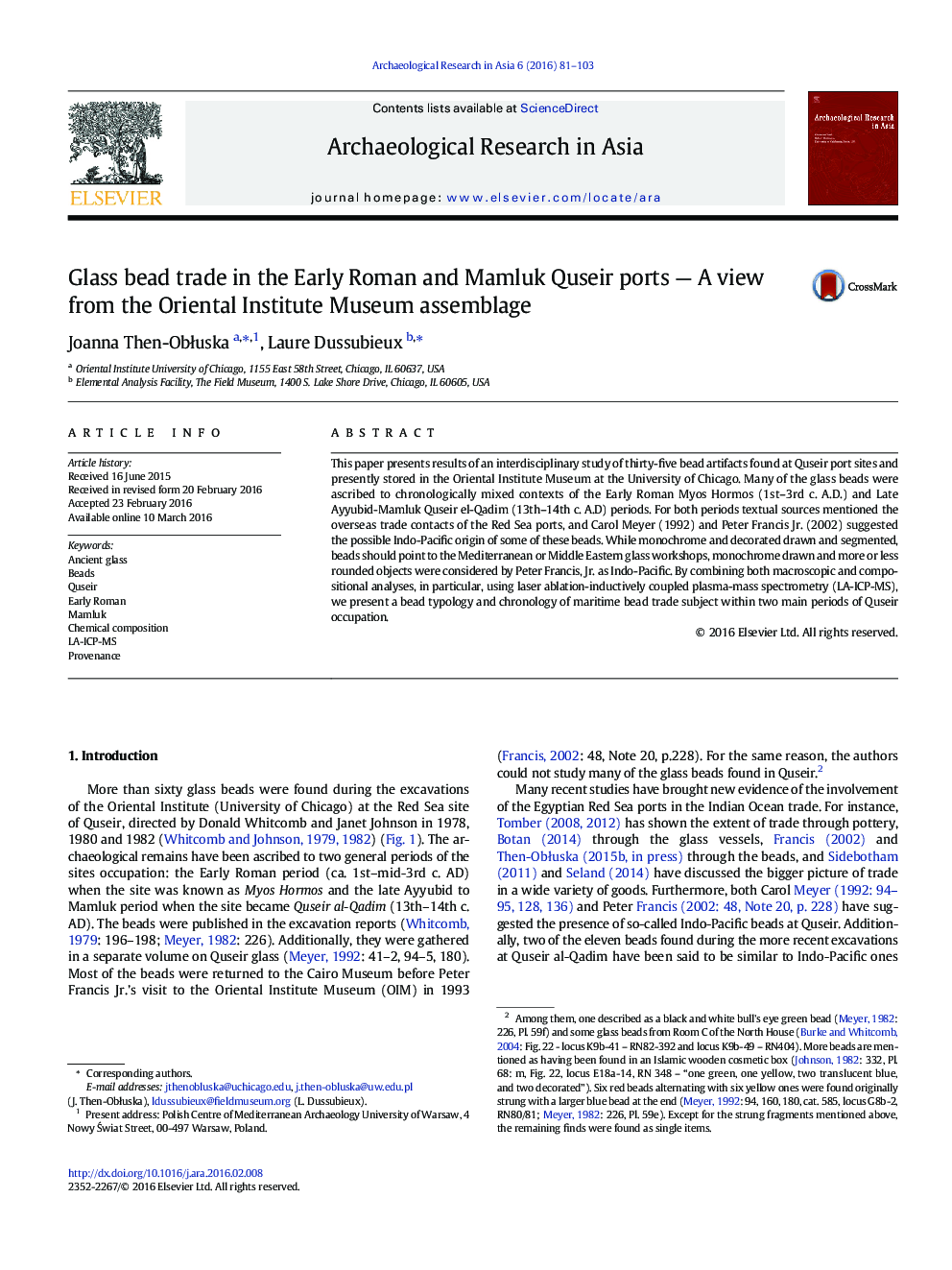| کد مقاله | کد نشریه | سال انتشار | مقاله انگلیسی | نسخه تمام متن |
|---|---|---|---|---|
| 1034147 | 1483766 | 2016 | 23 صفحه PDF | دانلود رایگان |
This paper presents results of an interdisciplinary study of thirty-five bead artifacts found at Quseir port sites and presently stored in the Oriental Institute Museum at the University of Chicago. Many of the glass beads were ascribed to chronologically mixed contexts of the Early Roman Myos Hormos (1st–3rd c. A.D.) and Late Ayyubid-Mamluk Quseir el-Qadim (13th–14th c. A.D) periods. For both periods textual sources mentioned the overseas trade contacts of the Red Sea ports, and Carol Meyer (1992) and Peter Francis Jr. (2002) suggested the possible Indo-Pacific origin of some of these beads. While monochrome and decorated drawn and segmented, beads should point to the Mediterranean or Middle Eastern glass workshops, monochrome drawn and more or less rounded objects were considered by Peter Francis, Jr. as Indo-Pacific. By combining both macroscopic and compositional analyses, in particular, using laser ablation-inductively coupled plasma-mass spectrometry (LA-ICP-MS), we present a bead typology and chronology of maritime bead trade subject within two main periods of Quseir occupation.
Journal: Archaeological Research in Asia - Volume 6, June 2016, Pages 81–103
